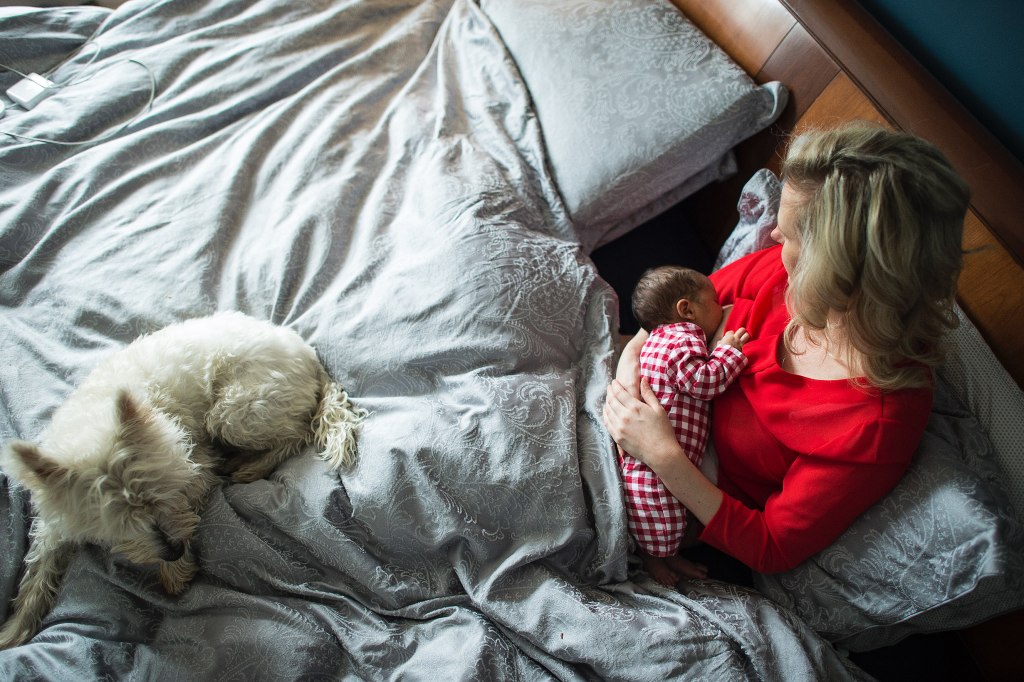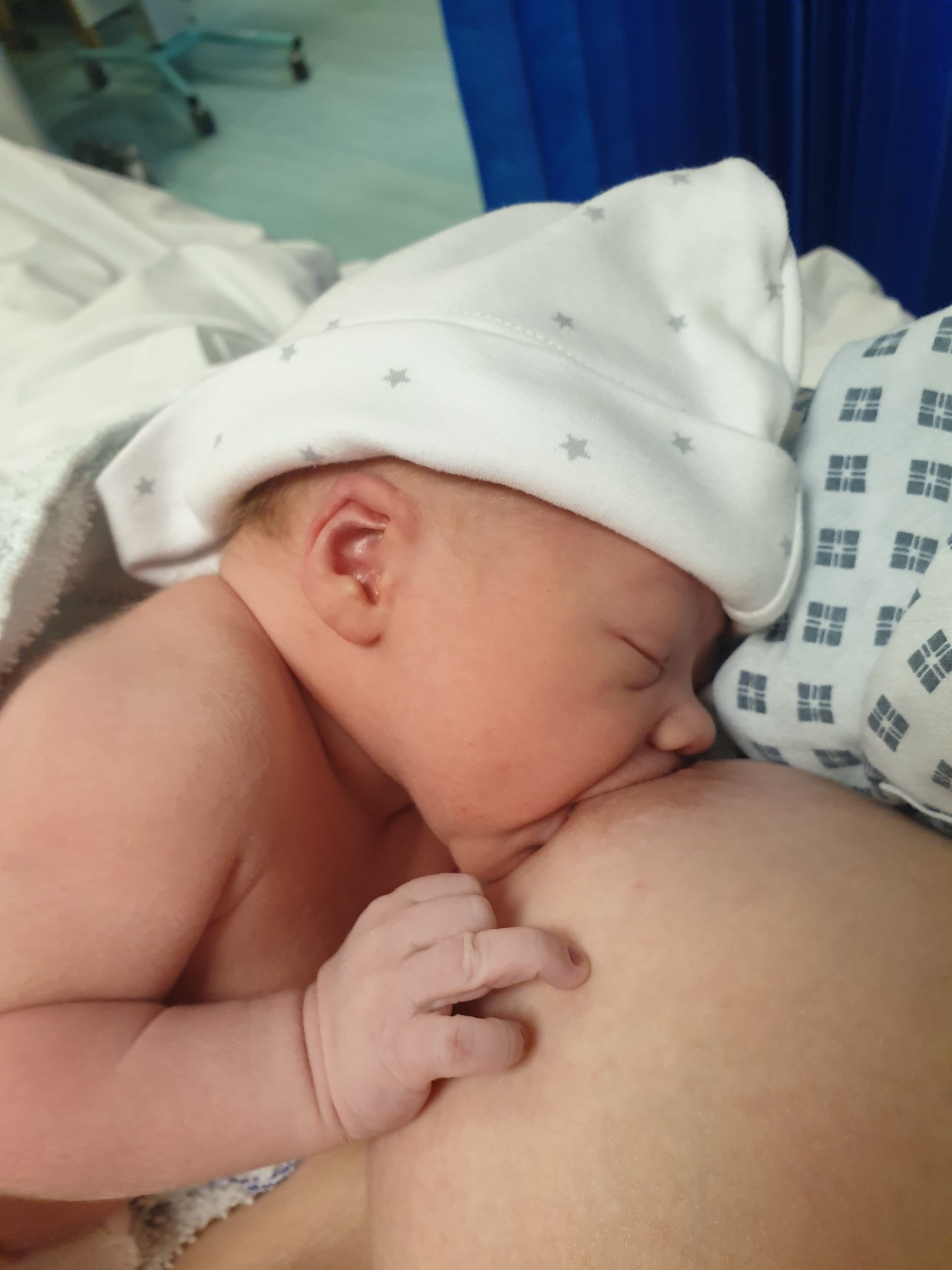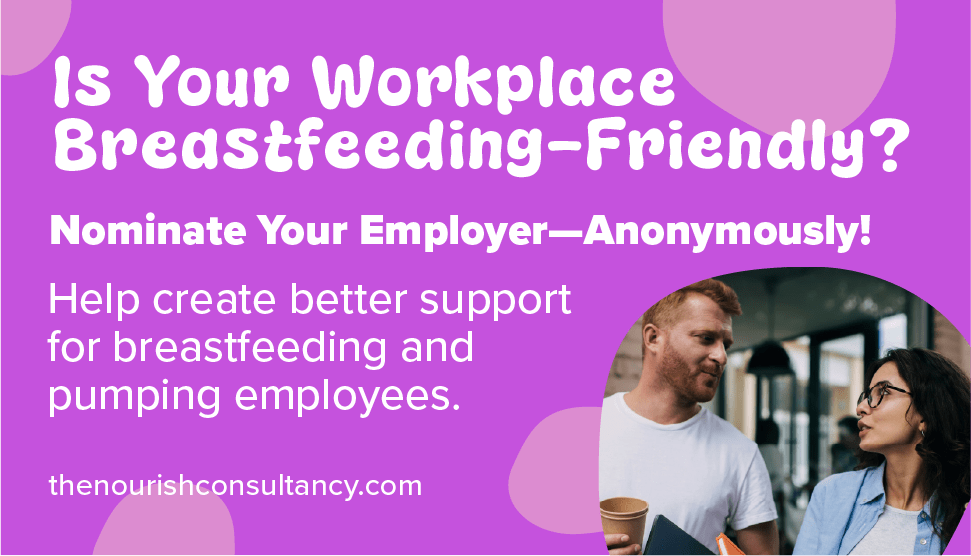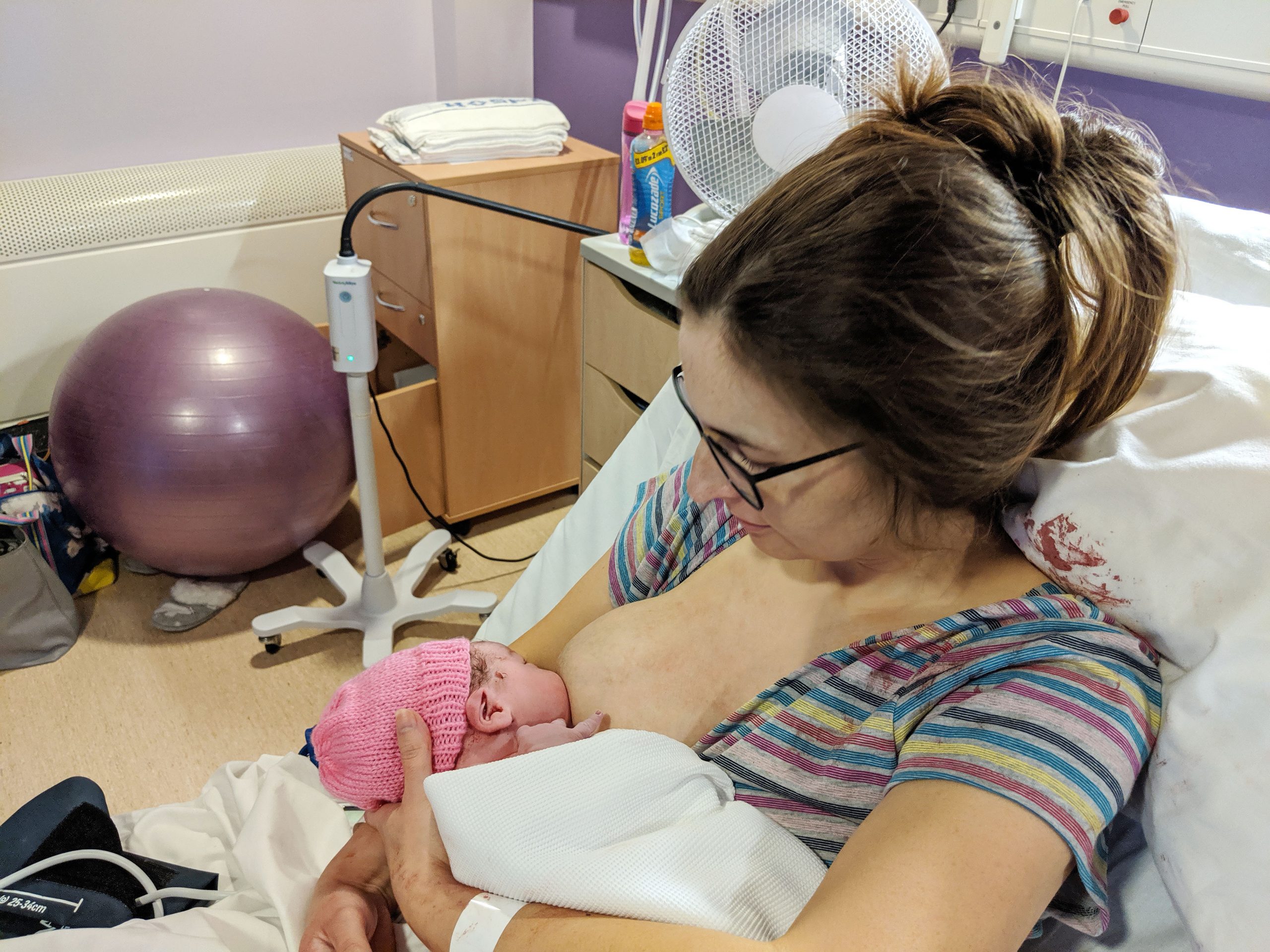Introduction
Your baby has arrived and you’re no doubt exhausted already but nothing has prepared you for the overwhelming love and adoration you feel for your little one. Congratulations!
The golden hour
Skin-to-skin straight after birth is often referred to as the ‘golden hour’. It is extremely important in helping initiate breastfeeding. It also helps a develop a close and loving relationship with your baby. Around the world, the benefits of skin-to-skin contact immediately after given birth have been recognised. If your baby is born healthy and well, you can expect to have immediate skin to skin – even before they are taken away to be weighed and measured.
The key thing is to lay your baby on you as soon after the birth as possible and have their head at the breast so they can latch on themselves. Some babies latch onto the breast straight away once they are born, others need coaxing on. If you are in the care of a midwife, they can help show you how to get the baby attached to the breast to feed.
If you’re finding it hard to wake a sleeping baby and get them to feed, skin-to-skin contact can really help. It can stimulate your baby’s need to feed and it’s a fantastic way to promote bonding.
The benefits of skin-to-skin contact
- Relaxes both parent and baby
- Releases oxytocin (love/ happy hormone) and reduces cortisol (stress hormone)
- Helps with bonding and attachment.
- Reduces anxiety in breastfeeding person
- Enables baby to acquire parent’s good bacteria – essential to build immune system.
- Regulates baby’s heart rate
- Regulates baby’s temperature
- Increases interest to breastfeed
- Encourages baby to latch on naturally
- Can increase milk supply
The magic of colostrum, your first milk
It’ll be another few days before your milk truly comes in but what you do have to offer your baby is colostrum, which is a thick creamy milk. High in fat, it’s exactly what your baby needs right now. In fact, colostrum is considered the first immunity (or vaccination) your baby receives – that’s because it’s rich in white blood cells and crucial antibodies.
It’s amazing how breastfeeding can come so naturally to so many babies. They immediately turn their mouth to the nipple and begin suckling! However, if your baby doesn’t latch on to your breast and feed straight away then a midwife can help. They may suggest you hand express some of the colostrum into a tiny syringe and feed your baby that way.
Colostrum is considered the first immunity (or vaccination) your baby receives - that's because it's rich in white blood cells and crucial antibodies.
More and more people are beginning to collect their colostrum milk from their breast towards the end of pregnancy. This is known as colostrum harvesting. It can be a really helpful thing to do if you think you will give birth early, or you have been told your baby may have a health condition. Babies born prematurely and with health implications can find it difficult to latch onto the breast straight away and may need specialist care in NICU.
Colostrum harvesting can also be useful for someone having a caesarean, or who themselves have a health condition such as diabetes, and may struggle to feed their baby from the very beginning.
You can begin colostrum harvesting by hand expressing your milk at around 37 weeks pregnant. Try hand expressing for a few minutes, 2 or 3 times a day.
The hospital may be able to supply you with a colostrum kit containing small syringes, allowing you to express and store your colostrum in the freezer until you are ready to give birth.
By having some colostrum to hand after the birth of your baby, means you can feed them straight away with a syringe.
Getting your baby latched on for a feed
Starting off on the right foot can really make your breastfeeding journey more enjoyable from the get-go. A big part of this is being mindful of how your baby latches onto the breast. If a baby latches on well then they will have the best opportunity to withdraw milk and feed effectively. It will also reduce the likelihood of nipple pain in those early days and weeks of breastfeeding.
Some babies latch onto the breast straight away and that’s great! However, for other babies, it’s a skill that needs to be learned. Even with babies who do latch immediately, their attachment may need to be improved upon to allow for a more optimal feeding experience.
Some babies latch onto the breast straight-away and that’s great! However, for other babies, it’s a skill that needs to be learned.
Start by holding baby with the opposite arm to the breast you intend to feed on, hold baby close making sure their head and body are in a straight line (not twisted towards you). Bring their head from the centre of your chest towards your nipple (nose to nipple) whilst supporting their neck, shoulders and back. Wait for them to open wide, before then allowing them to latch on and begin to suck. Always bring your baby to the breast and avoid ‘posting’ or bending towards baby to put it in their mouth, as this can cause discomfort for you during a long feeding session.
For those babies who need coaxing to open up wide, try to tickle their chin, or express a little of your milk onto their lips to encourage them to open up
Step-by-step guide to latching baby on
- Start by holding baby with the opposite arm to the breast you intend to feed on. Hold baby close making sure their head and body are in a straight line (not twisted towards you).
- Bring their head from the centre of your chest towards your nipple (nose to nipple) whilst supporting their neck, shoulders and back. (Always bring your baby to the breast and avoid bending towards baby to put it in their mouth, as this can cause discomfort for you.)
- Wait for them to open wide, before then allowing them to latch on and begin to suck. For those babies who need coaxing to open up wide, try to tickle their chin, or express a little of your milk onto their lips to encourage them to open up.
- Once baby is latched you may wish to cradle the baby with the other arm for your own comfort.
- One of the best ways to tell if your baby is latched on well is to look and see if your baby’s mouth is open wide and covering a good amount of the areola. Ideally, you should see more of the areola above baby’s mouth than below. You don’t want your baby just sucking on the tip of your nipple as this will get sore and mean they aren’t getting much milk.
Let's talk poo!
Your baby will likely do their first poo in the first 24 hours after being born. Be prepared for a sticky black poo to emerge! Don’t be alarmed, this is perfectly normal and it’s called meconium. After getting rid of meconium, their poos will turn a soft, yellowy-brown colour. Breastfed babies tend to have soft yellow-coloured poo which can actually smell quite sweet!
Feeding every few hours
A newborn baby only has a tiny stomach and so they only need a small amount of milk at a time but will need to feed every few hours. Unicef recommends you feed your baby at least eight times during a 24 hour period. This may mean waking a sleepy baby, but the most important thing is your baby feeds well and feeds regularly.
Unicef recommends you feed your baby at least eight times during a 24 hour period.
Responsive feeding
In these early days of breastfeeding, responsive feeding is the way to go. Responsive feeding is the term that has replaced ‘on-demand feeding’. Simply put, responsive feeding is feeding your baby when they are looking to be fed. It’s not about watching the clock and spacing feeds out at certain times. By responding to your babies own hunger cues in this way you are setting them up for healthy eating habits for life.
Feeding responsively will also go a long way to helping you build up a good supply of milk. By feeding frequently you are giving your body the vital signals it needs to make milk. If you can establish a good milk supply early on then this will make your breastfeeding journey a lot easier in the long run.

Good to know
You may feel your uterus contracting when you breastfeed and this is perfectly normal and nothing to worry about. It can feel a little painful but it’s a good sign that your uterus is reducing in size and shape.
Meet Charlotte: "The first feed was magical"
“I was in labour for 24 hours before Jonah arrived via an emergency c-section. It wasn’t long before the midwife put him on me for skin to skin and he latched immediately. My partner said it was magical to watch.

It wasn’t long before the midwife put him on me for skin to skin and he latched immediately. My partner said it was magical to watch.
Afterwards, on the postnatal ward I had a wealth of women checking my latch, counting feeds or wet nappies. My breastfeeding journey was supported from the outset and all was seemingly going well.
Unfortunately, on the third day in hospital, Jonah turned a tinge of yellow and developed jaundice. I was up all night nursing him and expressing colostrum to give to him via a syringe. My hard work paid off and the very next day the bilirubin score reduced from an 8 to a 3 and after one more night we were ready to go home. My milk came in another two days later, when I woke up engorged.
Now, I think back to that first latch like it was yesterday. So primitive, a baby’s desire to feed and so special for a mama, in those first few moments of meeting your baby. Everything just felt so right, in that moment.”
Jaundice in babies
Lots of babies will appear jaundice in the early days after birth. In fact, 60-80% of all newborns will have jaundice. Jaundice is most common in breastfed infants and more common in premature babies.
Jaundice is when a baby’s skin appears to have a yellow colouring to it. It usually starts on the face and then spreads down the chest and rest of body and can affect palms of hands and soles of feet. In some babies, the whites of their eyes can appear yellow too.
To help your baby overcome jaundice, it’s important to feed responsively, have lots of skin to skin, keep baby close, look for early feeding cues, and wake them for feeds if necessary. If health professionals suggest extra feeds for baby (to help with sleepiness/ growth/ jaundice) these can still usually be breast milk given via a cup or supplementary nursing system alongside continued breastfeeding.

Preparing for the fourth trimester
Once you’ve given birth, you have entered what is known as “the fourth trimester”. You may not have heard of this term before but the fourth trimester is a way of describing the period after birth when parent and baby are adjusting to their new lives together. During the fourth trimester, the idea is that you continue to keep your baby close to you and your body. It’s about giving yourself permission to ‘just be’ and to continue to think of you and your baby as one.
During the fourth trimester, the idea is that you continue to keep your baby close to you and your body. It’s about giving yourself permission to ‘just be’ and to continue to think of you and your baby as one.
At this early stage, don’t worry about ‘spoiling’ your baby by holding and feeding them a lot. Your baby craves your closeness for comfort and safety as they haven’t long left your body. They are still adjusting to life outside the womb. They want to feel the warmth and softness of your body. As you and your baby get to know one another and learn to breastfeed together, be prepared to give yourself over to the sofa (or your favourite chair). Settle in for lots of cuddles and feeding time together. It’s also the best opportunity you’ll have to watch those tv shows you’ve always been meaning to watch, or maybe even listen to an audiobook or podcast!










